Interpretations of Africa: football, art and design
Nine silhouettes are visible behind a translucent screen, which gives way to reveal some of Africa’s greatest football stars including Samuel Eto’o, Asamoya Ghan and Yaya Toure.
We are at the Design Museum for the launch of a Puma project that has seen African artists from the Creative African Network commissioned to design a kit for their country’s football team.
Puma partners ten African teams – Algeria didn’t make it today – and through the project is looking to combine sport and art ‘to celebrate football, art, colour and culture,’ according to Puma chief executive Frank Koch.
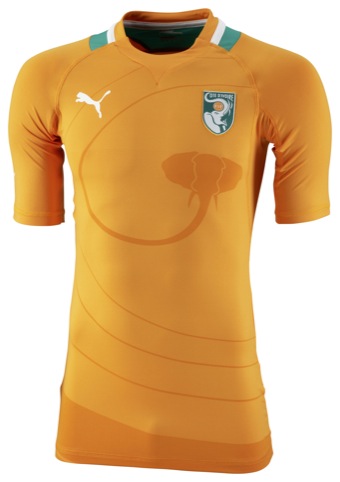
On their shirts are images including, variously, a lion (Cameroon), an elephant (Ivory Coast), and a Baobab tree (Senegal).
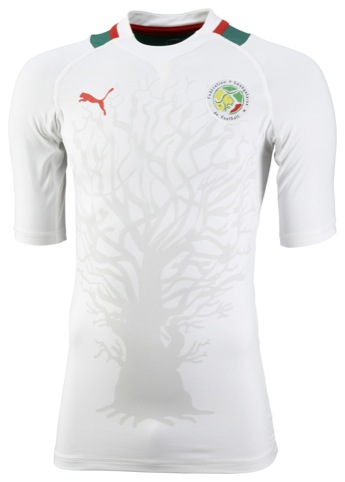
As the enormous media presence disperses and the players are flown back to clubs around the world, an exhibition remains, put on by the Design Museum to show the inspiration behind each idea.
From speaking to the artists, it transpires that the designs might have been more radical then they ended up, and it’s not Puma who held them back, but rather a 100-page FIFA regulation document which states, ‘No element can be reflective or change colour,’ and ‘Decorative elements are not allowed to dominate playing equipment.’
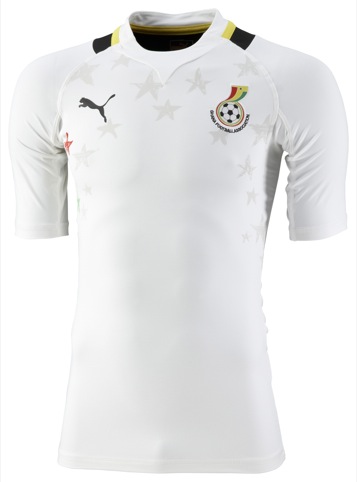
Godfried Donker, designer of the Ghana strip, says that he always starts work with a title, in this case Raining Black Stars. The design for the team, known as ‘the black stars’ was depicted in one early version as a single black star covering the front of the top, and in another as a black starred constellation. The final version, although still effective, was tempered to represent a team of light grey stars.
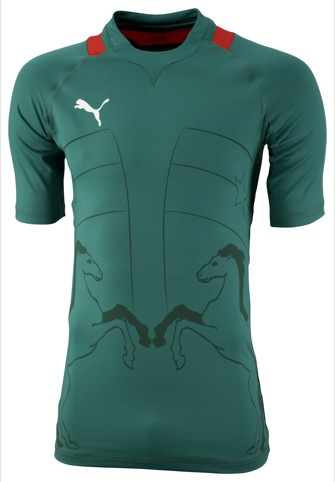
It should be said that all of the designs appear as a muted underpattern on the body of the playing shirt.
Donker says, ‘I started working on the designs just before the World Cup began last year in South Africa… The diagonally falling dark stars mirror the team in formation, in attack and in defense, protecting the red, gold and green stars which are of national interest.’
In 2004, a Puma Cameroon kit was banned for failing to meet FIFA guidelines. It was a sort of spandex onesy, or catsuit, which the team used for the 2004 Africa Cup of Nations, and subsequently for its 2006 World Cup qualifying campaign, incurring a 6 point fine – later revoked.
This time Puma turned to Cameroonian Bartelemy Toguo who produced three drawings for the project, before putting forward one, his lion design.
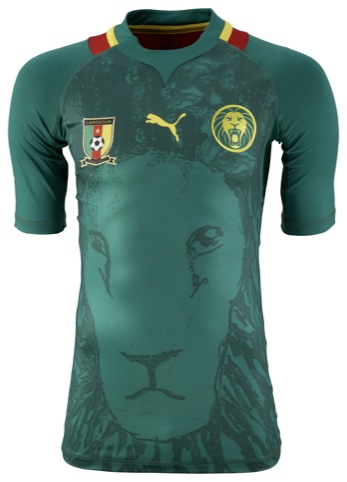
Toguo says, ‘This imposing animal is emblematic of Africa, simultaneously expressing forcefulness and serenity. It also suggests the ability to overcome any adversary which is relevant to the nature of a sporting challenge.’
The exhibition looks at how the artists worked to brief – some more closely then others – revealing their sketches, rationale and cultural references.
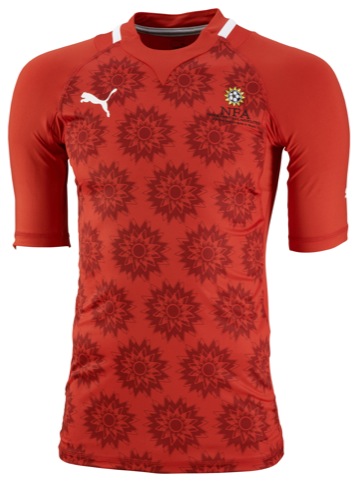
Design Museum exhibition curator Alex Newson says, ‘The artists have been brought out of their comfort zone to work to a complicated and demanding brief.’
A brief which includes buzz words ‘joy, speed, rhythm and contemporary,’ stipulating that national symbols and nicknames could be included and consideration must be made for ‘hooped or striped application.’
The exhibition Interpretations of Africa: Football Art and Design runs from 8-27 Novemberat The Design Museum, at Shad Thames, London, SE1





Hi, Thought you might like this. Jonathan